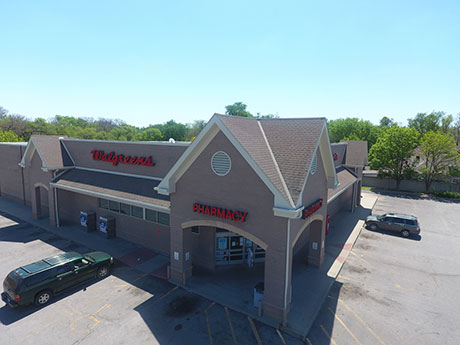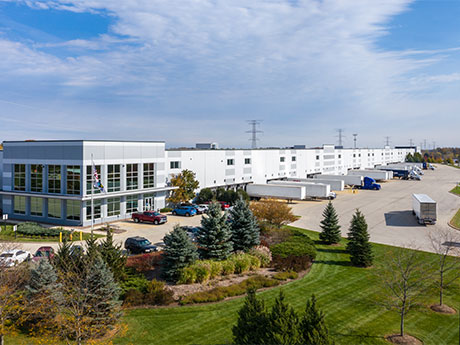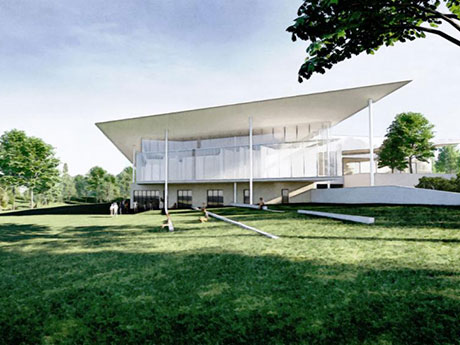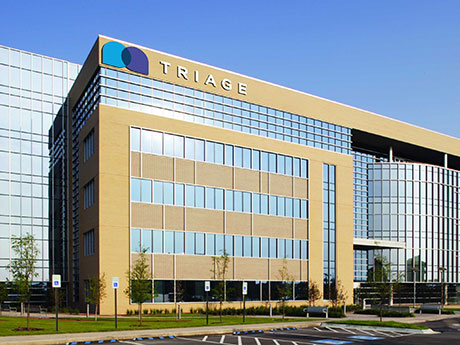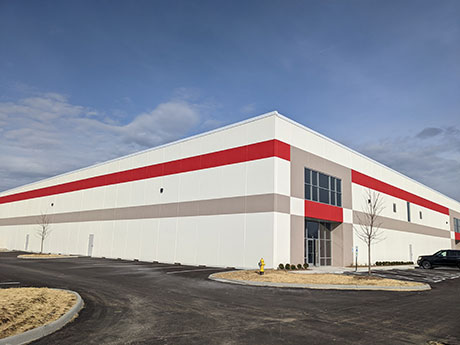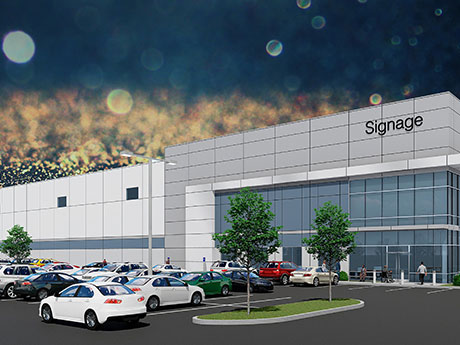Wichita experienced considerable retail and restaurant expansion throughout 2021, with other new stores planned for 2022. The two biggest new players to Wichita include Top Golf at 29th Street and Greenwich Road, now under construction, and Scheel’s entering the market with a new 220,000-square-foot store to be located in the former Sears space at Towne East Square. Top Golf is anticipated to open in late 2022, spurring more retail activity on North Greenwich. Furniture stores have been actively backfilling big boxes, including Bob Mills who took the former Michael’s, and Wichita Furniture, a strong regional player, taking the former 100,000-square-foot Kmart building on West Kellogg/US-54. Discount stores have continued to find a way to open more locations to increase their footprints in the market, both new construction and conversion of former retail spaces. Ollie’s Bargain Outlet opened its west store at Central and Ridge roads, and is also opening a store at Brittany Center. Quick-service restaurants (QSRs) have been active, including two new locations opening in 2022 for Dunkin’ and several new Dutch Bros Coffee locations as they enter the market as well in late 2022 and 2023. Tropical Smoothie Café opened a location last year and Smoothie King …
Midwest Market Reports
It’s safe to say office space design has been transformed over the past two years in large part due to COVID-19 and the work-from-home experience. It has changed for now, the foreseeable future and maybe forever. Though many people are still working from home, others have returned to the office, even if only for a few days a week, and many of the office spaces are looking entirely different. While this may be happening in other markets, it is a trend we are seeing in the Milwaukee office market. The idea of the design and aesthetic of the office has changed. Current trends in office design are focusing on safety and comfort, while also creating a sense of home at the office. Tenants are being more thoughtful about their space layout and design. Instead of trying to fit as many people as possible into the space, tenants are occupying roughly the same size, or even slightly smaller spaces, but focusing on making those spaces more welcoming to help ease those workers coming back into the office, as well as recruiting new employees. Bring home into the office This design trend has the goal to provide comfort and safety at every …
Like much of the country, the Milwaukee industrial market flourished over the last 12 to 24 months and has continued to shatter records across the board. Tenant demand far exceeded supply, driving vacancy rates down and rental rates up. Pent-up capital chased deals at record numbers, compressing cap rates further in this sector. And new construction continued its speedy pace, with over 8 million square feet on schedule to be delivered in 2022. But with inflation surpassing 8 percent and interest rates on the rise, the question now is how long will we continue this record-setting pace? Just-in-time to just-in-case As supply chain constraints emerged during the pandemic, businesses switched from the widely used just-in-time model to just-in-case, meaning drastic increases in inventory storage and logistic needs for many companies. Tenants scrambled to lease additional space to house what inventory they could get in stock. At the start of 2021, Class A industrial vacancy in Milwaukee was 9.68 percent. By the end of the year, that number had been slashed in half to just 4.39 percent as the flight to quality industrial product exceeded deliveries. In the fourth quarter of 2021, 1.65 million square feet of new industrial space …
Milwaukee is a city known for beer, motorcycles, basketball and blue-collar workers. However, Milwaukee should also be known for having a strong retail marketplace as well. With ever-changing markets and trends, retailers are finding many ways to get creative and adapt with the trends. Due to the adaptation, the competition for prime outlots is at an all-time high and does not appear to be changing any time soon. Outlot wars It’s with absolute certainly that the Milwaukee retail market has seen a massive influx for prime outlots. So much so that the phrase “outlot wars” is regularly used when describing retail outlot developments and redevelopments. In an already saturated segment of retail real estate, we have seen many new concepts/categories pushing to secure premium outlot sites in the market. Quick-service restaurants (QSRs) and fast-casual restaurants, auto and financial institutions are the biggest participants to date. Since the beginning of the COVID pandemic in 2020, we have seen a pretty significant shift in the food category from QSR and fast-casual concepts alike. Milwaukee has seen many existing concepts continue to expand or reposition within a market, but we have also seen new concepts making a push to enter the market as …
What does the Lincoln, Nebraska commercial real estate market have to offer? Quite simply it has land, room to grow, affordability and a centralized location. Pair these attractive and unique features with an educated workforce in a culturally diverse community and the answer becomes clear. Lincoln’s commercial real estate market has a lot of potential. Despite Lincoln’s small size of approximately 300,000 people, it is experiencing the same challenges and triumphs as the bigger metropolitan areas. Warehouse space One of the biggest challenges in the Lincoln market is the low supply of industrial space in a high-demand environment. The industrial vacancy rate as of year-end 2021 was 1.6 percent. Any new product that comes on market is leased quickly and the per-square-foot selling price is trending up with a 31 percent increase in just three years. Unfortunately, in the Lincoln market, the value of new industrial construction building permits has been trending down over the last five years. The rising cost of construction makes this trend even more significant; many developers are unwilling to invest in speculative product without the certainty that tenants will pay the rental rate necessary to provide an adequate rate of return. One local developer, Las …
Omaha’s office market saw more total lease transactions in 2021 for more total space than in any year since our firm has tracked it — 281 transactions for nearly 1.8 million square feet. In a typical year, Omaha usually sees approximately 200 transactions for 1 million square feet. In addition to leasing activity, net absorption was positive at 310,391 square feet, and Omaha’s overall vacancy rate contracted slightly over the year. In turn, year-over-year market rent growth reached its highest point since pre-COVID-19. “Though slow-moving compared with other major U.S. metros, Omaha’s office market is showing early signs of a recovery thanks to its diversified employment base,” states CoStar. It seems fair to describe the market as stable as we are not seeing large swings in space availability and pricing, but it feels tenuous, just as corporate office space decision-makers are dealing with uncertainty. We continue to see office users choosing to wait and see on decisions affecting demands for office space. Most of the numbers are trending the right way, albeit slowly, but Omaha’s vacancy rate is more than 300 basis points higher than seen in many years before the pandemic, and we finished 2021 with 324,398 square feet …
With low vacancy, positive absorption and robust leasing and investment activity, the Columbus industrial sector is positioned to experience a substantial amount of demand to continue throughout 2022 after a record-breaking year in 2021. Last year set the tone for historic construction and absorption and the market is poised to continue its strong momentum. It is easy to look at the map and see why Columbus is such a great logistics hub given its prime location within a 10-hour drive within 47 percent of the U.S. population, fairly flat topography and direct access to major freeways. There is one big piece of the pie that doesn’t always get noticed, which is the economic development powers that are putting Columbus on the map. Jobs Ohio and OneColumbus have done an incredible job attracting businesses to the state of Ohio. The biggest investment in the history of Ohio was announced this January when Intel revealed plans on building a new chip factory in New Albany. This $20 billion investment really put all eyes on the Northeast part of Columbus. As it gets tougher to get entitlements and zoning in other industrial submarkets, New Albany seems to be carrying a significant amount …
There was a time when an investment in the Columbus, Ohio commercial real estate market had to be justified to outsiders and required a higher return to attract investors. After all, it sits squarely in “fly-over country” in the heart of the rust belt. With the exception of getting a superior return, why would an investor choose Columbus, over say, New York or Chicago? But that’s all changed. Cap rates are now as low as, or lower than, other major markets. Investors have been driven to those markets, despite having a lower cap rate, because they knew rent growth was continuous and the sales price would appreciate over time. For decades, Columbus’ sales prices had remained stagnant due to a lack of increase in lease rates. However, over the past two years, lease rates have been rapidly increasing in the industrial market, and projections expect that trend to continue. The Columbus office market hasn’t seen the same rental appreciation — yet. But projections indicate that there will be rental appreciation in office as well, mostly due to increased demand and lack of speculative development over the past two years, but also due to rising land and construction costs. Because of …
The industrial market will be forever changed by the COVID-19 pandemic. Before the pandemic, demand for industrial space was closely tied with gross domestic product (GDP), with demand rising and falling alongside the U.S. output of goods. The pandemic has accelerated an already shifting economy to an “on-demand” economy. This shift was created by technology companies fulfilling consumer demand via the immediate provisioning of goods and services, and has now led to industrial warehouse demand being more in line with consumer spending versus GDP. Consumer spending and personal income are at all-time highs, with e-commerce sales growing exponentially throughout 2020 and 2021. Companies have been leasing warehouse space at a meteoric rate, driven by the need to store goods to accommodate the demand and mitigate risk from supply chain complications that have been brought on by the pandemic. Over the past two years, millions of square feet of warehouse space in the Chicagoland area have been leased for e-commerce use to tenants such as Walmart, Wayfair, Hello Fresh, Imperfect Foods and, of course, Amazon. Additionally, as traditional brick-and-mortar retailers transition to greater online sales, they require more warehouse space for goods storage, which has led tenants such as Target, Walmart, …
When it comes to which office properties will succeed in the coming years, success may boil down in part to who is minding the store. Like most big cities, Chicago’s office market has been tested by the pandemic, and office property owners face a far more competitive environment. Year-end 2021 office vacancy rates were nearly 18 percent in the central business district (CBD) and over 25 percent in the suburbs, or 44 percent and 35 percent higher, respectively, than two years prior, according to NAI Hiffman research. Hybrid work is here to stay, and some employers are shrinking or shifting their office footprints. When the pandemic is finally in the rearview mirror, office demand is not going to be the same as it was a couple of years ago, although we are still figuring out just what it will be. Which office properties survive and thrive in post-pandemic Chicago and nationwide will depend on many factors, including the property’s age or condition, its location and, increasingly, how well the property is programmed and run. That includes satisfying tenants in terms of everything from air quality to event assistance; meeting lenders’ environmental, social and governance (ESG) requirements and other new demands; …


